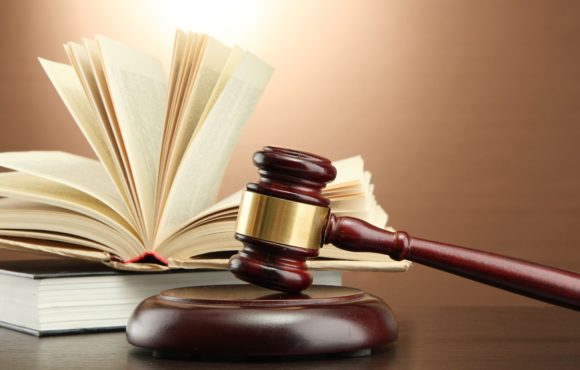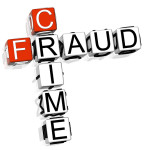Life does not always turn out quite like we planned. If you had asked me at age 16 what I was going to be when I grew up, without hesitation I would have told you about my future as an archaeologist. I had spent two weeks on a dig site and it was exhilarating. Although the law caught my attention and became my new passion, I have never lost that love of digging through dirt. Fortunately, as a workers’ compensation defense attorney, I apply that passion to my practice through the art of discovery. There are a plethora of options and approaches available for this investigative phase of case handling. Knowing what tools to employ at each step is the key to the success of a case.

The approach to discovery should be case-specific. There is no singular formula that can be considered right or wrong. The key is knowing what is right or wrong for a specific claim. There must be an understanding of the who, when, where, why, and how of a claim to help craft a plan of action for discovery.
Starting with “the who,” the team that is built to collect evidence during discovery is crucial to a comprehensive investigation. Employer representatives, including human resources professionals, supervisors, and payroll custodians, each have information to offer. Insurance adjusters are at the center of the team, working hand-in-hand with defense counsel and coordinating the plan of action. The adjuster has to strategically decide whether to retain counsel upon receipt of a Notice of Appearance, Request to Produce, or Petition for Benefits; for the purposes of discovery, retaining defense counsel as early as possible is always preferred. Often, cases warrant the inclusion of a nurse case manager (NCM). However, the work of the nurse should not overlap and duplicate the work of the defense attorney. When including an NCM in the discovery process, it is important to remember that their reports and work are not privileged like that of an attorney. Other vendors such as investigators and medical providers, are also regularly needed to seek further assistance and to round out a “dream team.” Each one of these professionals has a role in the discovery process, but not everyone is needed, useful, or financially beneficial in every case, even an attorney. The best team for one claim may not necessarily work for another claim. The players should be selected on a case-by-case basis.
After establishing a team, the plan moves on to “the when.” What is the trigger that starts a discovery process and how do the facts of the case affect a plan of action? When there are “red flags” permeating the claim, the first steps in starting the discovery process need to be taken upon receipt of a Notice of Appearance or at implications and threats from a pro se claimant that they are hiring a lawyer or “going to sue.” When the defense receives a Request to Produce, indicating that the claimant has begun their own investigation, they should start discovery immediately to catch up. At the very least, upon receipt of Petition for Benefits, it is time to jump in and start to dig. Additionally, the facts of the case can guide the commencement of discovery. For example, questions of the truthfulness of the claimant can affect the start of discovery. This may stem from a post on social media, accounts reported by a team member or employer, or knowledge of hobbies/activities.
Simply knowing the starting point of the discovery process in a case is not sufficient though. In order to plan a successful approach, a clear end goal must be identified before strategizing on how to get there. Is the goal to reach a settlement prior to a mediation? Or, to negotiate for settlement at a state or private mediation? Perhaps the goal is full-steam ahead to trial. Whatever the desired result may be, a roadmap should be drawn out that accounts for potential detours.
The question of “where” to dig, and use the information that is uncovered, is the next logical phase of consideration. The team cannot narrow the scope of discovery if it plans to get the upper hand and defeat the opponent. But, rather than throw a wide net, or before throwing it, the discovery team must calculate what information is worth their effort of gathering and consider how much information is necessary versus how much is overkill. More is not always better. Sometimes more discovery is only more work, more effort, and more expense.
With regard to the information that is found through the investigation, the discovery team cannot show its whole hand if they are not ready to put their cards on the table. Consider these lyrics as sage advice from The Gambler: “You’ve got to know when to hold ’em, know when to fold ’em, know when to walk away, and know when to run. You never count your money, when you’re sittin’ at the table, there’ll be time enough for countin’ when the dealin’s done.” Meaning, establish whether there is a benefit to holding back an element of discovery by identifying what may be more effectively used at trial or what is not yet ripe for disclosure. Evidence pertaining to credibility is often important to hold back as it may be used for impeachment. This includes information that if known to the witness in advance can give him/her the opportunity to remedy or plan a way to rehabilitate him/herself against an attack on credibility. Never underestimate the value of surprise; but, also never violate the rules of disclosure of evidence. Strategy is the key component of where we dig for the information needed to understand the case and make informed claims decisions.
The next component is “the why.” Why are we going to handle what we have learned in the calculated manner we do? Defense counsel will never tell the opponent all the things they plan to do to build their case, such as “I am going to talk to your doctor and convince him to place you at MMI.” Instead, armed with the facts, the evidence, and better arguments, the defense counsel should say, “I engaged in conferences with each of your authorized doctors.” The discovery team cannot simply threaten to dig, they must be ready to get dirty for their plan to be effective. The reason, or “why,” is that it puts the team in the best position to negotiate from a position of power. They must be well equipped with the spoils of their discovery and be prepared to present the evidence in a clear, coherent, and logical manner, reflecting careful searching. The evidence should also be presented in a manner that is just as compelling of a showing to the Judge. Whether it be at the mediation table or in front of the judge’s bench, the defense team must dig so that they are prepared to present the best evidence possible and never have to fall back on ‘the dog ate my homework’ or ‘I’m planning to do that next’ excuse.
Perhaps the most interesting of these elements is “the how.” What tools should be used in order to be most effective in both finding relevant results and limiting costs? There are a plethora of options, including: subpoenas based on ISO/Index or medical canvasses, recorded statements of the claimant, witnesses, or supervisors, Department of Economic Opportunity/Social Security Administration queries, requests to produce, initial and supplemental requests for production, and Claimant depositions. The team must weigh the timing and scope of information to be covered, and should also consider other depositions taken of the employer, doctors, adjusters, and witnesses. Information can also be gathered from doctor conferences (pre-evaluation, before an independent medical examination, pre-depo, seeking maximum medical improvement, and requesting future anticipated medical costs). Well planned and orchestrated surveillance is often beneficial if the proper details have been provided to the investigator. Background checks and social media searches are often lucrative endeavors too, as are interviews of key players such as supervisors and co-workers. That being said, every tool has a cost, so it is important to use funds wisely and strategically. Selecting the wrong instrument can stand in the way of a successful discovery process. Selecting too many tools can cause costs to exceed the benefits. Be sure to select with care and choose the approach most likely to fall in line with the facts of the case.
In short, the defense team’s approach needs to be coordinated and goal-oriented. There are important considerations to help craft a plan, such as the questionable nature of an alleged accident, character and credibility of the injured worker, costs versus benefits, and calculation of overall exposure. To ensure an effective discovery dig, a preliminary strategy should be formed upon initial claim review; but, fluidity is key. In an aggressively defended case, the investigation never ends. With each piece of information that is uncovered, there is often a lead to keep the team on the path to deeper knowledge, more evidence, and stronger arguments. With each step though, the team should never lose sight of their responsibilities under the law and what their job actually is. The success of the defense will be measured not by what is denied, but rather, in gathering the truth to ensure those who are legitimately injured, and who present themselves in a forthright manner, get the benefits to which they are entitled. The discovery process helps to ensure that everyone pays for that which is owed, but no more and no less. That is why we roll up our sleeves and jump on in.
Success stems from the often arduous, sometimes costly, dig through the dirt; approached properly, even the lightest of dust can hide a glimmering diamond in the rough, just waiting to be found and be the key to the case.
Was this article valuable?
Here are more articles you may enjoy.


 Smartmatic, One America News Settle Election Defamation Lawsuit
Smartmatic, One America News Settle Election Defamation Lawsuit  Viewpoint: The Impact of Behavioral Health on Workers’ Comp
Viewpoint: The Impact of Behavioral Health on Workers’ Comp  J&J, Kenvue Told to Pay $45 Million to Baby Powder User’s Family
J&J, Kenvue Told to Pay $45 Million to Baby Powder User’s Family  Beyond the Claim: How Social Canvassing is Transforming Insurance Fraud Detection
Beyond the Claim: How Social Canvassing is Transforming Insurance Fraud Detection 